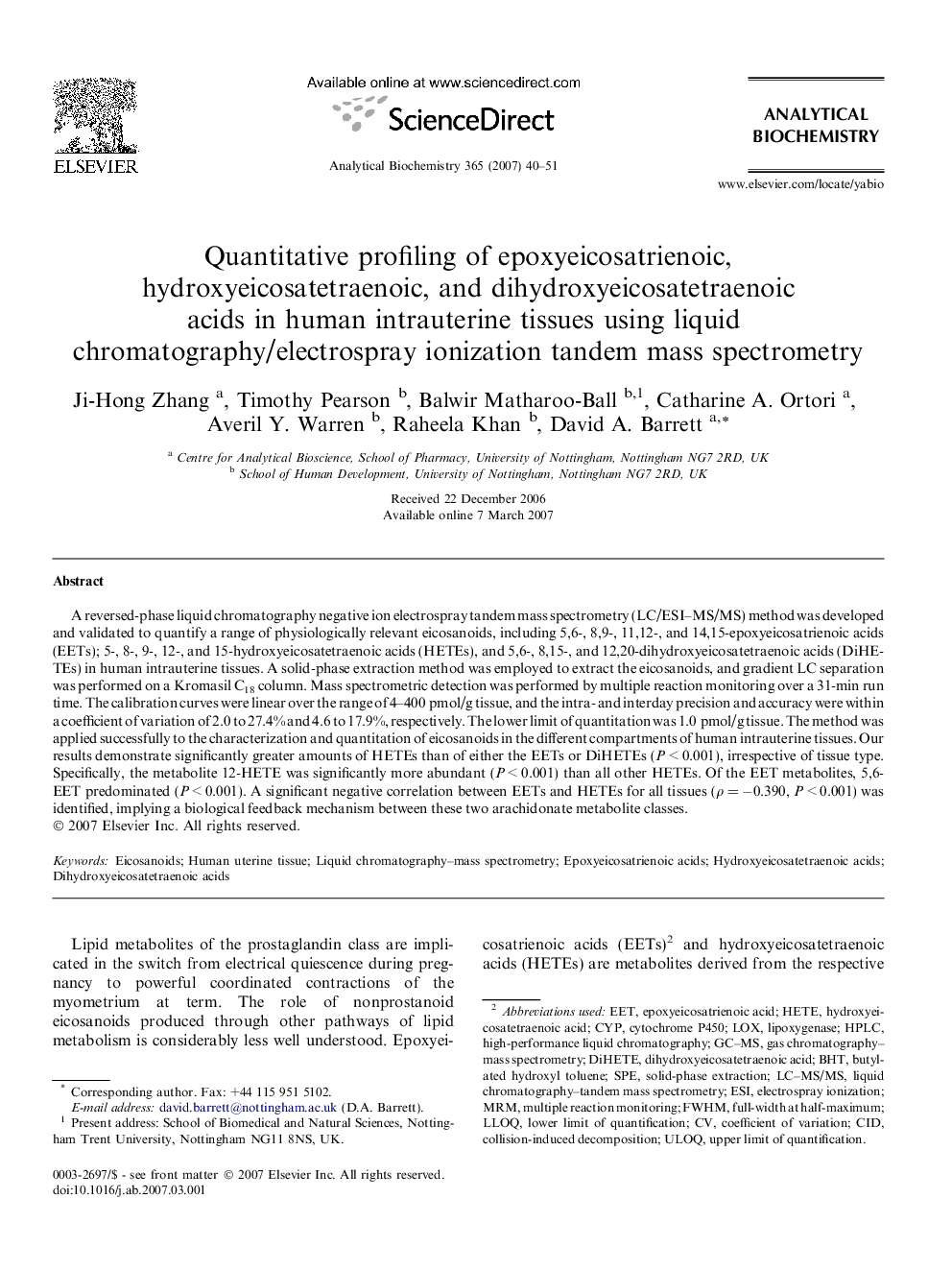| کد مقاله | کد نشریه | سال انتشار | مقاله انگلیسی | نسخه تمام متن |
|---|---|---|---|---|
| 1176660 | 961868 | 2007 | 12 صفحه PDF | دانلود رایگان |

A reversed-phase liquid chromatography negative ion electrospray tandem mass spectrometry (LC/ESI–MS/MS) method was developed and validated to quantify a range of physiologically relevant eicosanoids, including 5,6-, 8,9-, 11,12-, and 14,15-epoxyeicosatrienoic acids (EETs); 5-, 8-, 9-, 12-, and 15-hydroxyeicosatetraenoic acids (HETEs), and 5,6-, 8,15-, and 12,20-dihydroxyeicosatetraenoic acids (DiHETEs) in human intrauterine tissues. A solid-phase extraction method was employed to extract the eicosanoids, and gradient LC separation was performed on a Kromasil C18 column. Mass spectrometric detection was performed by multiple reaction monitoring over a 31-min run time. The calibration curves were linear over the range of 4–400 pmol/g tissue, and the intra- and interday precision and accuracy were within a coefficient of variation of 2.0 to 27.4% and 4.6 to 17.9%, respectively. The lower limit of quantitation was 1.0 pmol/g tissue. The method was applied successfully to the characterization and quantitation of eicosanoids in the different compartments of human intrauterine tissues. Our results demonstrate significantly greater amounts of HETEs than of either the EETs or DiHETEs (P < 0.001), irrespective of tissue type. Specifically, the metabolite 12-HETE was significantly more abundant (P < 0.001) than all other HETEs. Of the EET metabolites, 5,6-EET predominated (P < 0.001). A significant negative correlation between EETs and HETEs for all tissues (ρ = −0.390, P < 0.001) was identified, implying a biological feedback mechanism between these two arachidonate metabolite classes.
Journal: Analytical Biochemistry - Volume 365, Issue 1, 1 June 2007, Pages 40–51